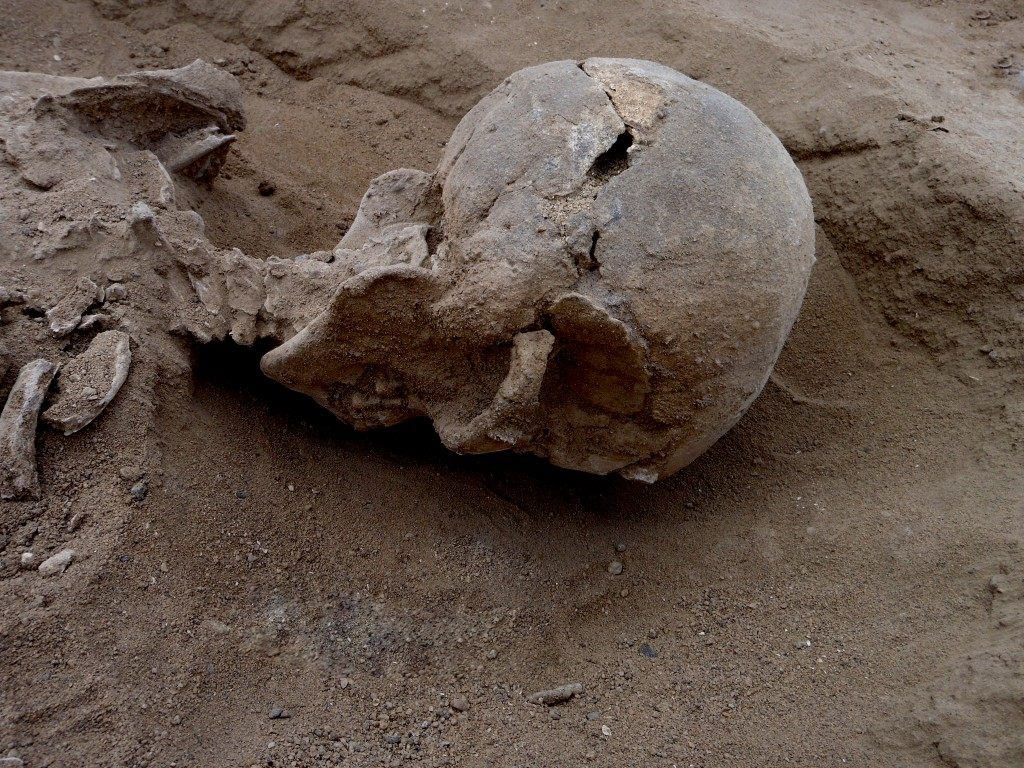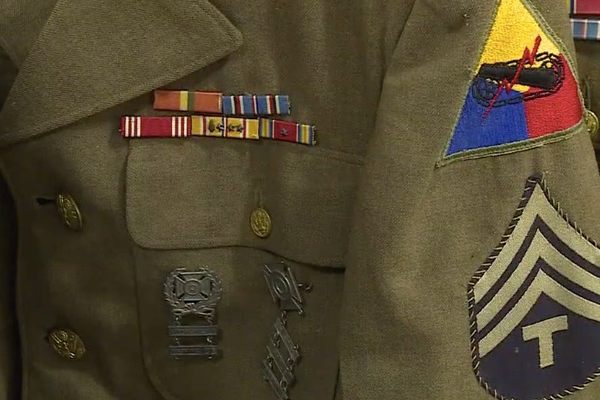FOUND: Evidence of Early Violence Between Foraging Humans

One of the clubbed skulls (Photo: Marta Mirazon Lahr/ Fabio Lahr)
One of the great questions of human history is when we started organizing violent attacks on one another. Often, the beginning of warfare is associated with the advent of agricultural society, when people stored resources worth stealing and were settled in one place. But a new study, published in Nature, shares evidence of an early attack on a group of hunter-gatherers that lived 10,000 years ago, an unusual example of a massacre of a group of foragers.
In an area called Nataruk, in Kenya, not far from Lake Turkana, archaeologists found a group of 12 mostly complete skeletons, 10 of which show clear signs of meeting violent deaths. The place where they were found may have once been a lagoon; the ground now contains the shells of gastropods and clams. The archaeologists also found fragments of bone harpoons: likely, the people who lived here fished.
This group of people was attacked by another: the skeletons show marks of clubbing, with two different sized clubs, and stabbing, with stone blades. The archaeologists found an obsidian bladelet in the skull of one man, and since obsidian is not common in this area, it suggested the attackers came from outside.
The skeletons were also positioned randomly: “no standardized orientation or position of head, face, or bodies was observed,” the scientists wrote in their paper. Some were face down, others had their cheeks to the ground. Perhaps the most chilling skeleton the team found had been pregnant–the bones of her fetus were there, too–and her arms were positioned in a way that looked like she’d been tied up.

This woman’s hands were crossed as if they had been tied (Photo: Marta Mirazon Lahr)
One possible explanation for the violence is that the attackers were after resources gathered by this group of people. Or perhaps they were just unfriendly strangers. Either way, this group of unfortunate people is evidence that humans were killing each other even before we settled down in towns and cities.
Bonus finds: A Welsh dinosaur named Draco, a Loch Ness monster-sized trench, a tree frog that hasn’t been seen since 1870
Every day, we highlight one newly lost or found object, curiosity or wonder. Discover something unusual or amazing? Tell us about it! Send your finds to sarah.laskow@atlasobscura.com.













Follow us on Twitter to get the latest on the world's hidden wonders.
Like us on Facebook to get the latest on the world's hidden wonders.
Follow us on Twitter Like us on Facebook